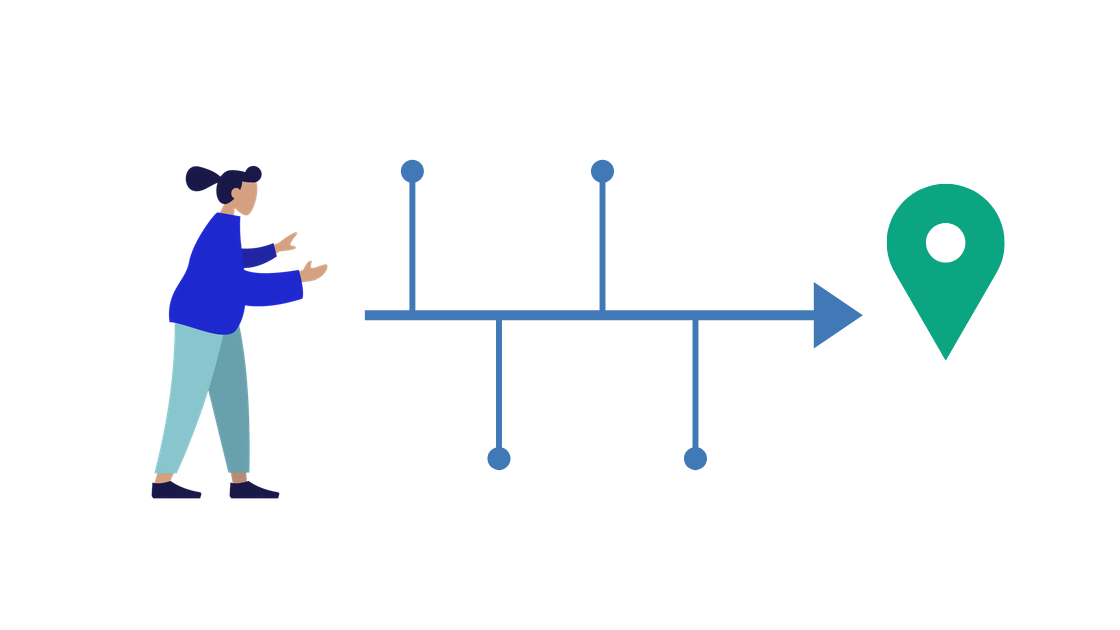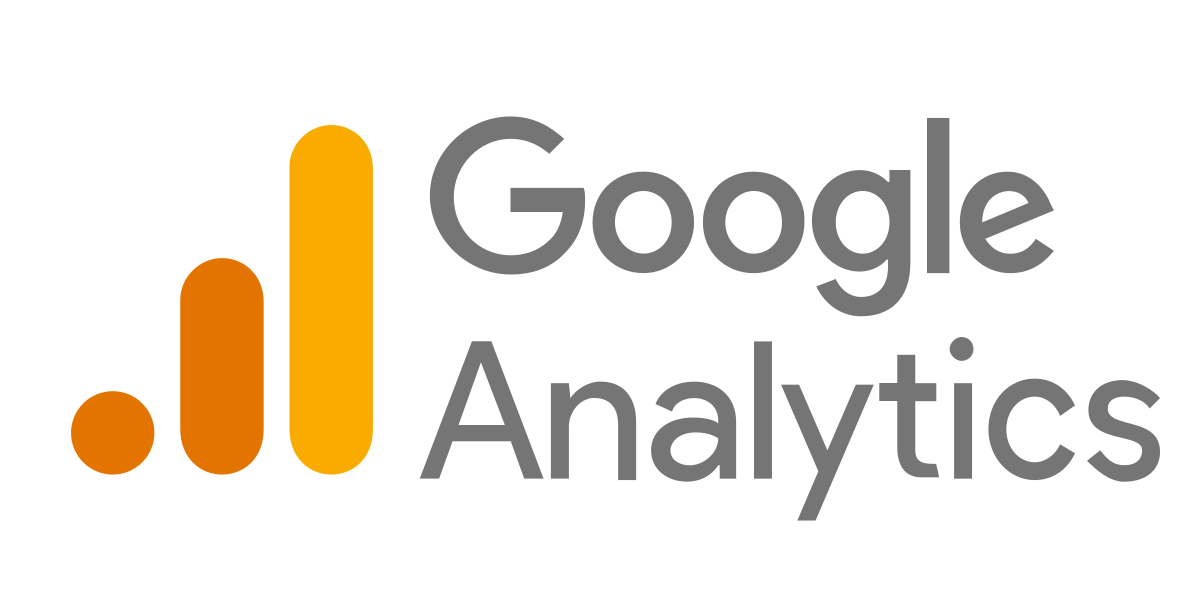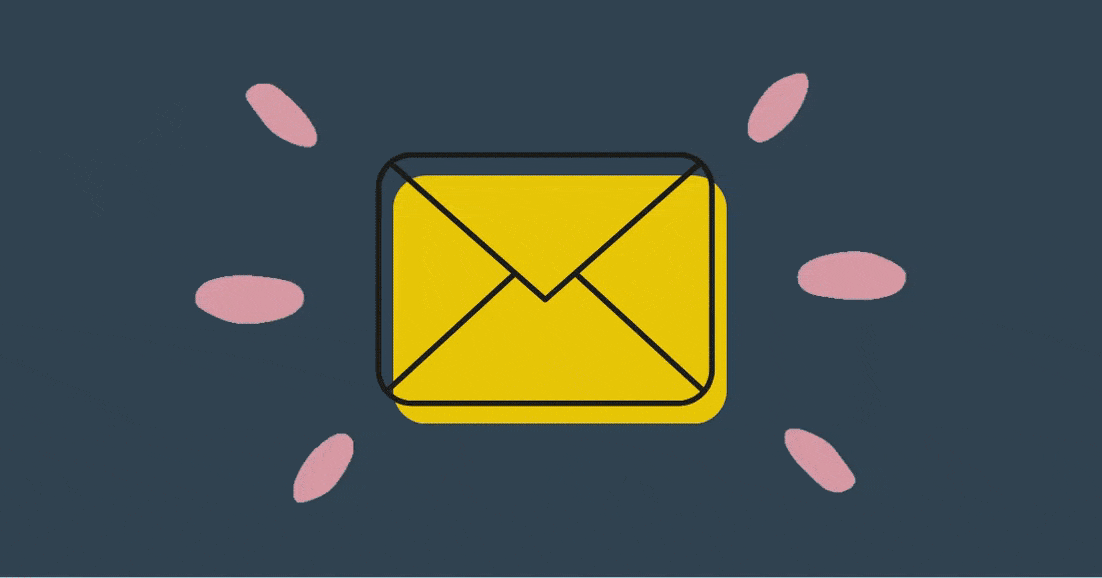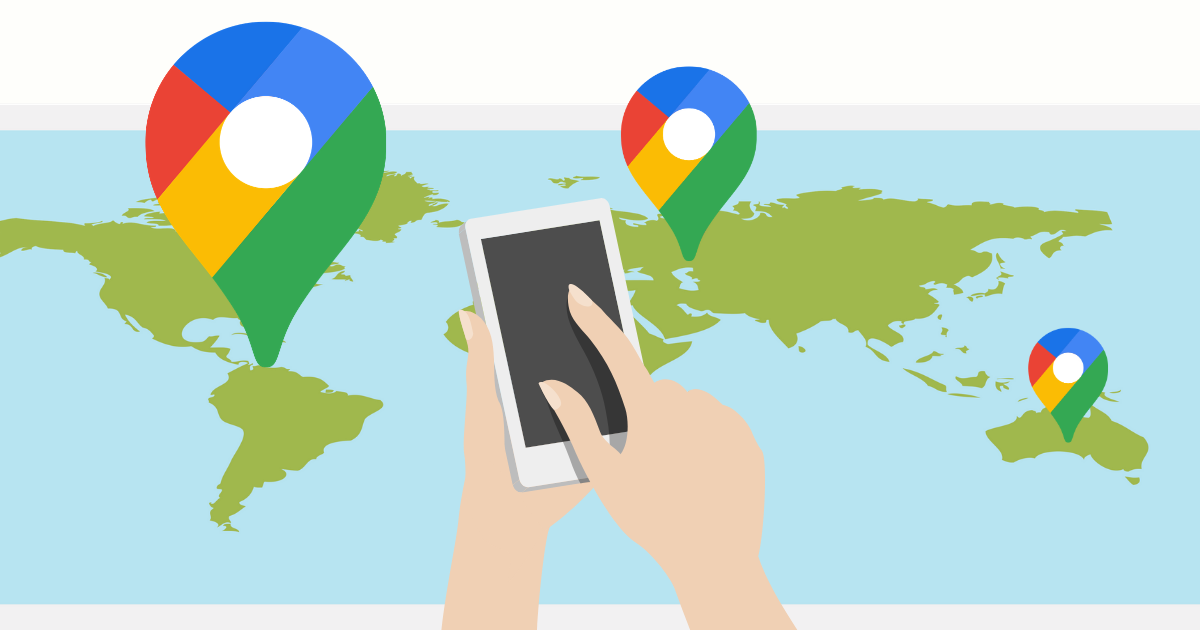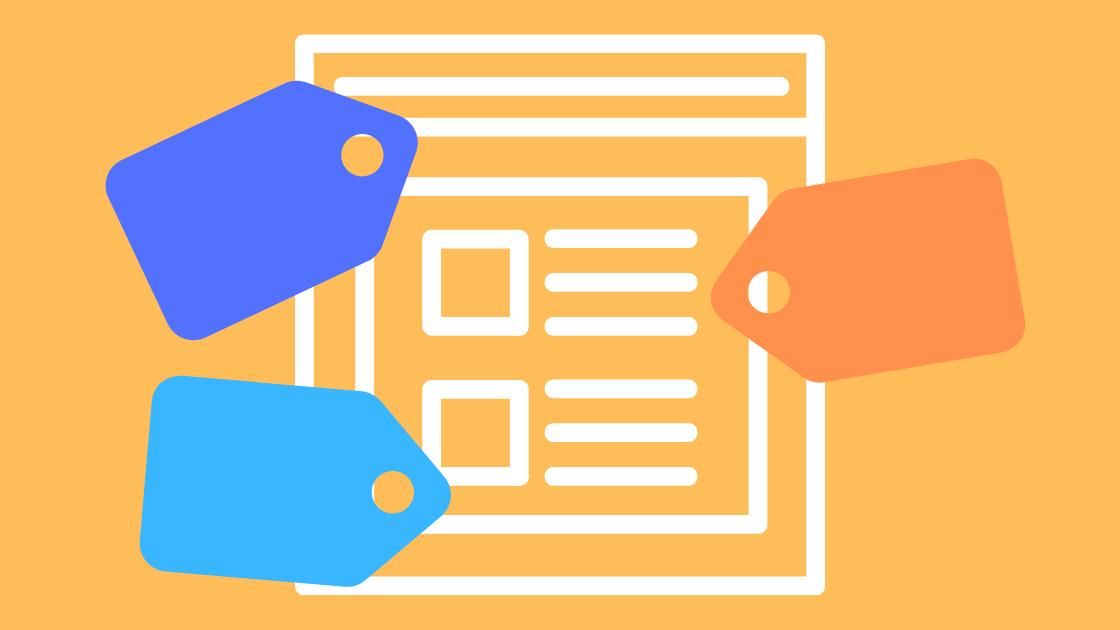Customer journey mapping definition
Journey mapping is a way to visualize how each type of prospect (persona) acts and makes decisions during each stage of the buying process before taking the leap to do business with you.
So, what does this mean, what is customer journey mapping?
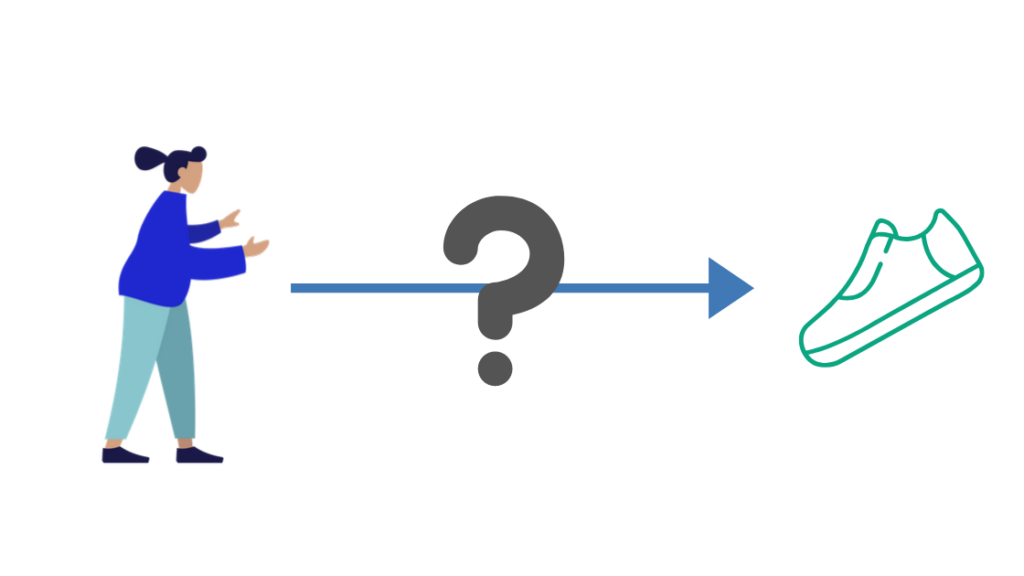
Let’s start by placing ourselves in the shoes of the consumer; for example, let’s say the consumer is looking for a new pair of shoes. When purchasing shoes, there are many different ways someone approaches it. They can go to their favorite store, browse the web, or wander through the mall; furthermore, maybe they saw a Facebook ad or saw a sale sign in the store window that leads them to make a decision. However they approach the researching, comparing, buying, and support process, each consumer is experiencing their unique customer journey.
Therefore, a customer journey map researches and documents what a consumer is experiencing at each of the customer journey stages. It is useful to categorize and analyze your audience based on personas to develop a more personalized customer journey and maximize effective strategies.
What is the purpose of journey mapping?
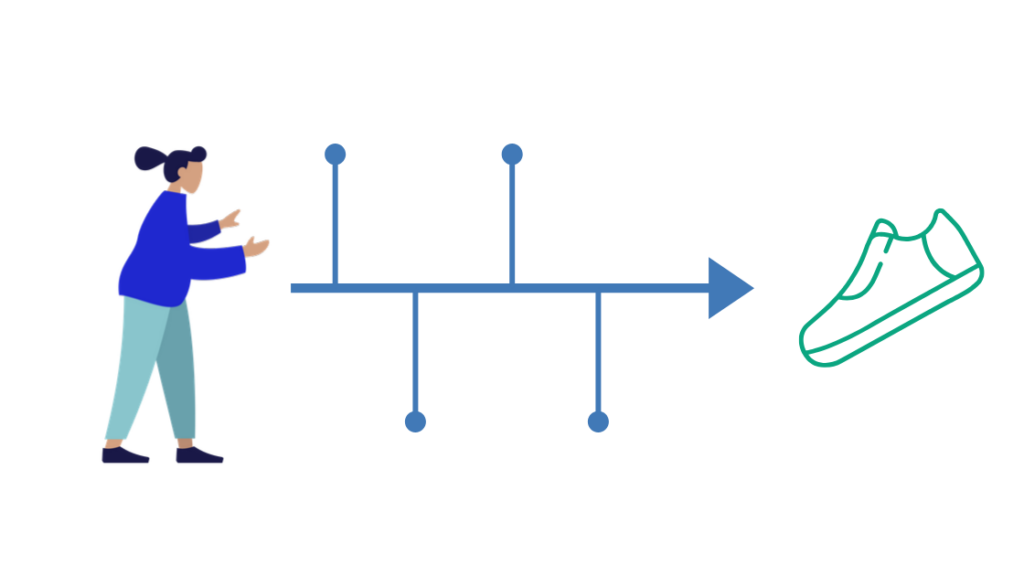
The purpose of journey mapping is to focus on a consumer’s experience with your business across all their phases, rather than focusing on one stage of the process at a time. Oftentimes departments will develop strategies specific to their consumer interaction without communicating how it will influence another department’s area. This is typically just a result of not knowing how each step is connected from the consumer’s perspective. A consumer does not look at each stage as individual experiences, instead, every interaction with the business is grouped as one experience or their consumer journey map.
Therefore, the purpose of journey mapping is to understand a consumer’s behavior, motivation, or feelings as they interact with your business and product before, during, and after the purchase, or lack of purchase. The objective is to frame the journey map from the perspective of the consumer, without letting internal biases or assumptions impact the mapping.
Benefits of journey mapping
The customer journey map helps a business visualize:
- Each stage of the buying process
- The tasks your prospect completes
- Questions your prospect might ask
- How your prospect might interact with you and how you support the interaction
- Emotions your prospect might feel
- Pain points you might experience
Therefore, the visualization of the customer experience journey helps a business:
- Identify spots during the buying process where you could provide more assistance to your prospects
- Better handle the emotions of your prospects
- Gain a better understanding of how and why your prospects become your customers
- Avoid missed opportunities
- Better support your customers based on each of their personas
How to create a customer journey map
Breaking down the customer journey stages
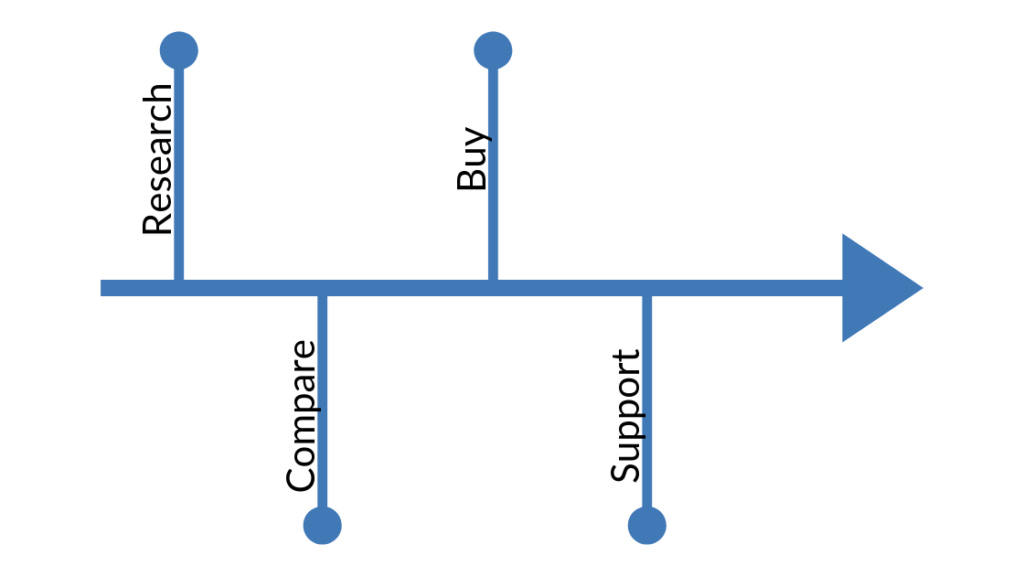
The customer journey stages can be broken down into four phases: research, compare, buy, and support.
- Research is where the consumer is initially gathering information. At this point they are neither ready to make a purchase or have decided where to purchase.
- Compare is after the customer has completed their research and are now evaluating the options and considering the pros and cons to make a final decision.
- Buy or the conversion process is when the consumer has made their decision and needs to know how to proceed with the purchase.
- Support is how your business decides to support and further engage the customer after the sale.
Using your customer journey mapping tools and questions
Next is the data collecting and question-asking step. After laying out each of the customer journey stages, we now must learn about the customer’s experience at those stages. When researching the customer journey, data can be collected through website analytics, social media, surveys, or any other consumer-based interactions or marketing. Website analytics provide insights on how a user arrived at your site, how long they stayed, what buttons or links they clicked on, etc. Social media is a great platform for gathering feedback or gauging social interaction, oftentimes consumers will voluntary post feedback or reviews that are extremely useful for developing the experience map. Surveys allow consumers to provide direct feedback along different stages of their user journey. In addition, it is valuable to include both qualitative and quantitative data because qualitative information presents a personalized voice to the journey while the quantitative data can support that information.
Overall, by utilizing multiple tools and resources for gathering both quantitative and qualitative data, it will create a significantly more robust research journey map.
Customer mapping topics/questions
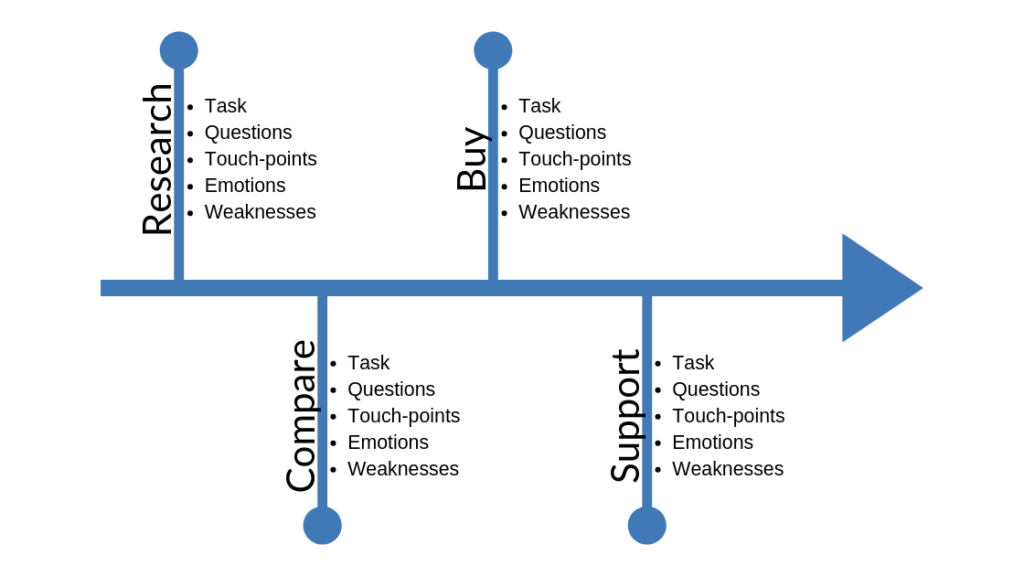
In order to analyze each of the customer journey stages, the following 5 topics/questions should be addressed at each stage.
- Task: What is your customer trying to achieve at this stage?
- Questions: What is your customer wanting to know at this stage? What are the questions they want to answer?
- Touch-points: How does the customer interact with you at this stage? How do you support this interaction?
- Emotions: What does the customer feel at this stage?
- Weaknesses: What are some pain points for your organization during this stage? Where might you let down your customers?
These questions address both the positive and negative aspects of the customer journey so the business can understand areas to maximize and improve. This reiterates the importance of researching data from the customer’s perspective, rather than using internal assumptions, because what the company believes is the user journey may be different than the actual experience map, therefore proving the journey map ineffective.
Customer journey map example
Let’s run through an example. First, start by outlining your audiences by their personas. For this example, below are a business’ three personas and a description of each.

We will use the persona Karen, the small business owner, for our example analysis. The next steps are to cover the 5 questions/topics (task, questions, touch-points, emotions, and weaknesses) for each 4 stages (research, compare, buy, and support) specific to the persona.
Stage #1: Research
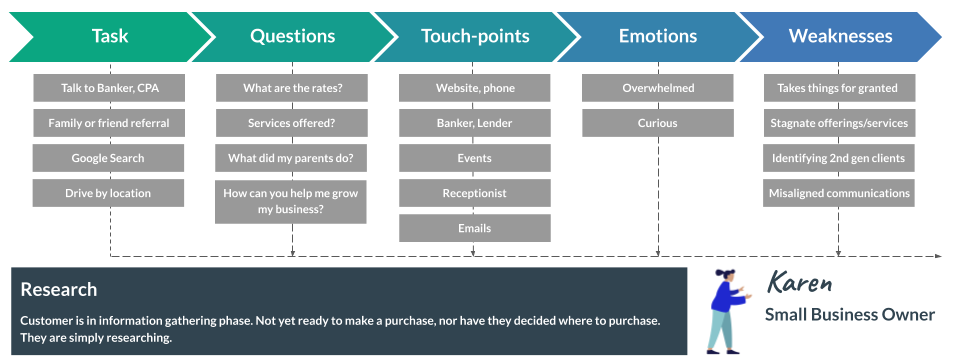
Stage #2: Compare
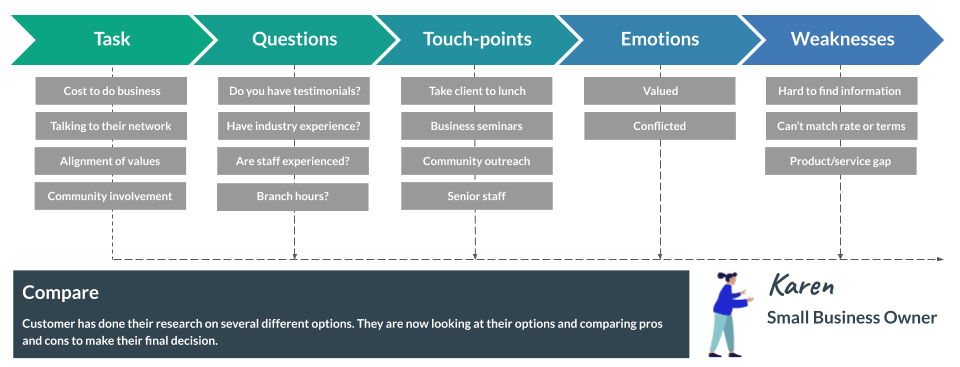
Stage #3: Buy
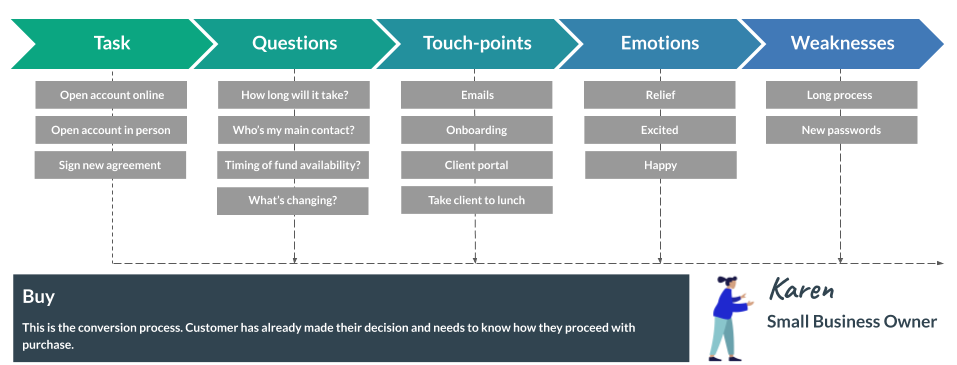
Stage #4: Support
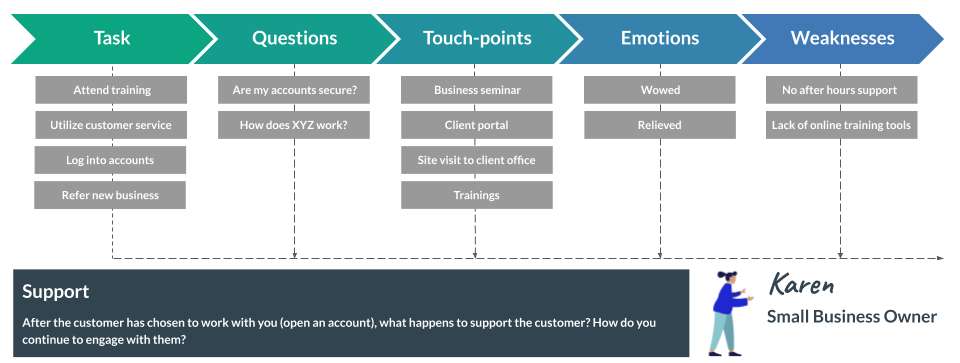
This breakdown describes how the persona Karen experiences the business’ sales process from what questions she is asking during the research stage to what she feels is lacking during the support stage. This visual representation gives an in-depth look into how your customers are experiencing your business in real-life.
The next steps would be to repeat this process for the other personas, Bob the corporate stakeholder and Sheila the millennial, to create a complete consumer journey profile.
Other journey map examples
While this is just one visual customer journey map example, there are multiple ways to present the information. The most common is the use of infographics to display and present the gathered journey map research. Ultimately, the goal of the visual representation is to display the data in a manner that is easy to comprehend and understand.
In addition, some journey mapping should include only the components that are significant to the viewer. For example, the data that the business owner may need to view vs the data the sales director needs to view may vary based on the situation. A consumer journey map is beneficial for departments and strategies across the business, such as for designers, marketers, copywriters, etc. because it can all alter their content or productions to effectively communicate with the customer.
Overall, journey mapping is a way for a business to understand how a consumer feels, makes decisions, or behaves during each stage of the continuous buying process so the business can understand and improve their selling experience.
